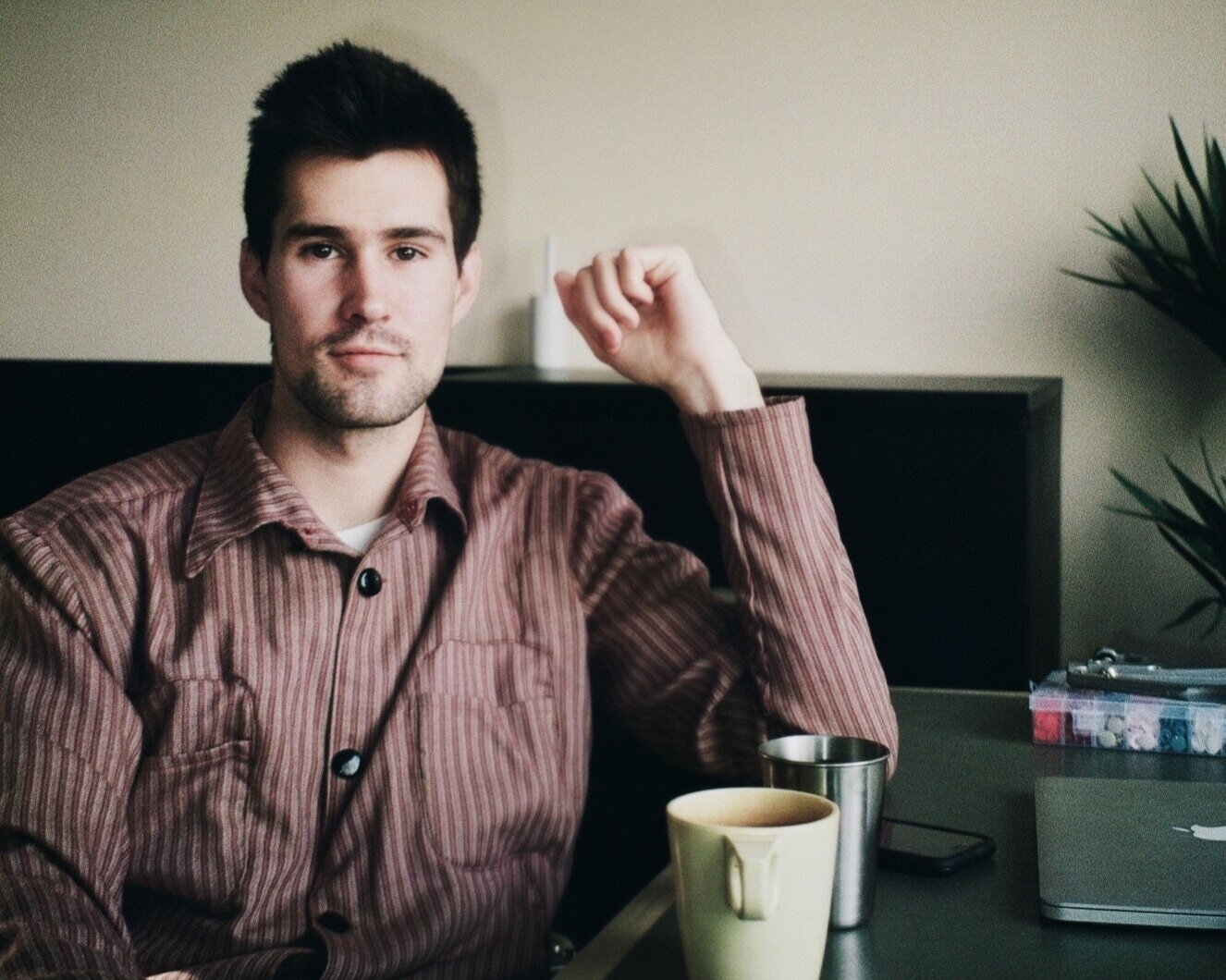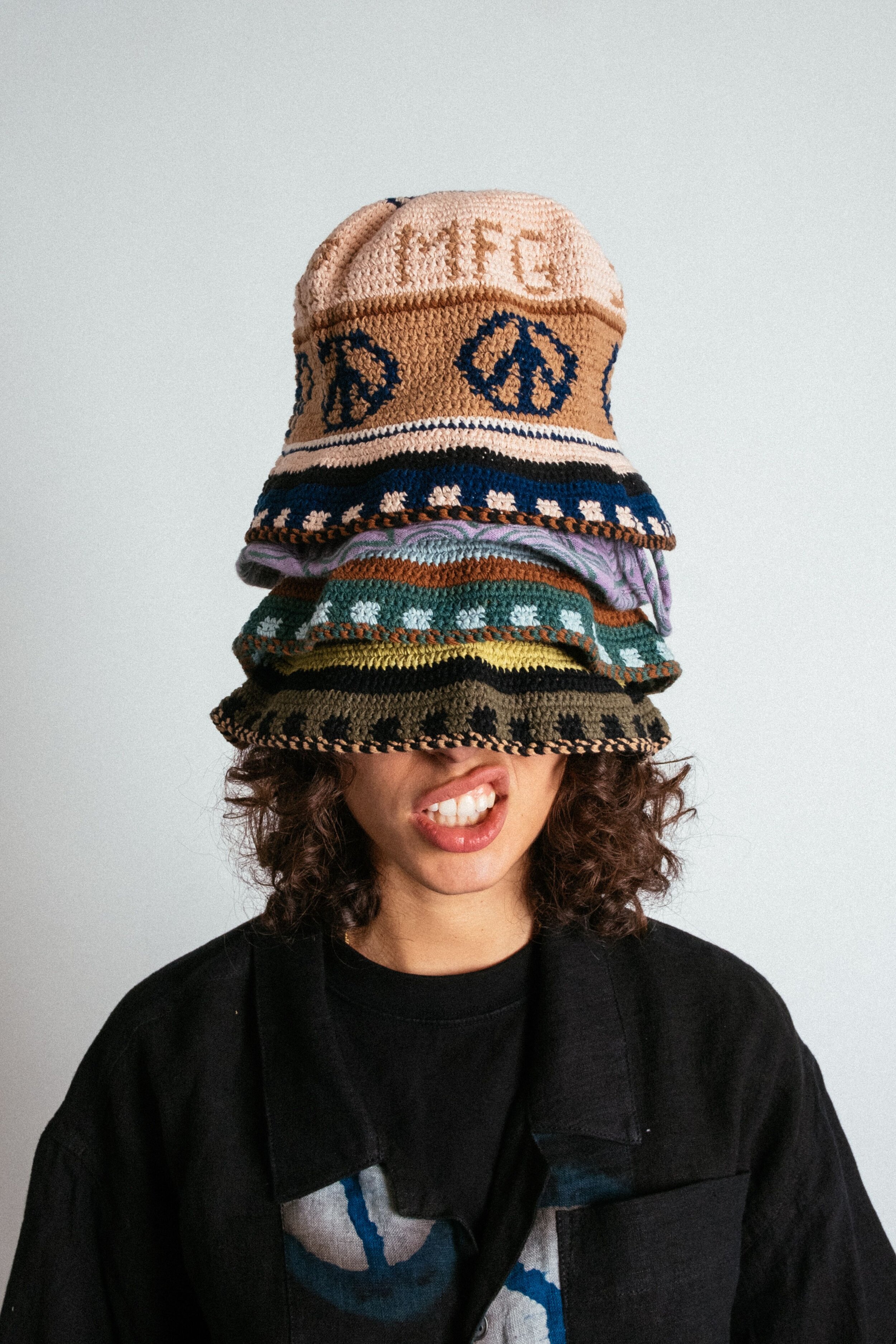COLIN MEREDITH - DISTINCTIVE UTILITARIANISM

Canadian designer Colin Meredith has found his way into a unique position within the fashion industry. Through constant exploration and his ability to make ideas come to life, his work represents a DIY approach mixed with a distinctive utilitarian design language.
The progression of Colin’s work has been incredible to watch. Steadily advancing from making one-of-one garments, to intricate DIY projects like this past summer when he created all his gear for the trek of the North Coast Trail across the north shore of Vancouver Island. Projects like this not only represent Colin’s creative process, but his unique design aesthetic of balancing form and function in his creations as well. From hiking pants and hydration vests to backpacks and tents Colin has honed his skills to a crazy level. The Archive Looks section on Colin’s website further reinforces this design language by blending an impressive understanding of styling with a functional utilitarian aesthetic.
Colin’s personal creative projects and exploration of garment design has led him to work with a wide range of brands like Jjjjound, Noah NYC, Louis Vuitton, and Reigning Champ. Recently, Colin began working on the design team at Arc’teryx which has the potential of a match made in heaven.
The Sabukaru team caught up with Colin for a follow-up interview [our first interview] to talk about his recent projects, his outlook on design, love for the outdoors, and future moves.
Hey Colin, It’s been just over a year since your last talk with Sabukaru, and it's been a pretty crazy one at that. How's life, and what have you been up to in these times?
Crazy year indeed! Life has been good to me, considering the state of the world. And I’ve been busy with all sorts of things! I guess my big news in recent months is that I’ve started working full time as a designer at Arc’teryx, which has been really exciting.
It looks like you’ve been getting outdoors a lot. How do outdoor activities like hiking, kayaking, and running affect your design process later?
Yeah, I’m so lucky to live where I live and get access to the nature around me. The outdoors have an immense effect on the things I make and design, and serve as inspiration/motivation as well as a testing ground to try things out.
The clothing you make seems to be just as much about its function as its form. How do you balance each goal in your creative process?
For me, to commit the necessary time to make something, the idea or concept has to be a healthy mixture of function and form. If it’s all function without considering any creative twist or addition, I’m not interested. If it’s all creative frills with no real world purpose then I won’t put the time in either. As far as balancing the two when creating, if the item I’m thinking about making pertains too much to one trait then I’ll just think about it for a few days and see if I can’t figure out a way to weave in the other aspect. Usually after giving myself some time to process in my head I can find a way of making the item both functional and interesting (to myself at least, haha).
So how do you get initial inspiration for your clothing, and what is your process from there? Each piece looks like it fits a certain need, or is based on a specific reference.
It sounds cliché but inspiration really comes from all over: movies, paintings, nature, you name it, haha. Yeah I think I usually get excited about something in particular like the fit of someone's pants I saw in the street, and then subconsciously I’m thinking about that thing until I land on something I’d like to add or change about those pants. It’s really haphazard and I kind of just go with the flow.
Most of your designs are one of one pieces. Does this change the way you look at making a garment?
Yeah absolutely. By making just one, I’m not confined to the limits of producing items on a bigger scale. I don’t have to worry about all the things you’d consider if if was a business: fabric cost/colours, production cost etc.. Making one-of-ones allows me to just go with my gut and be really free in my creations.
We saw the project where you hiked the North Coast Trail fully equipped with your own homemade gear, where did that idea come about? How did the trek go, and did all the gear hold up?
Haha, yeah that was fun. The idea came about almost as soon as we booked our trip. I was hesitant to tell anyone that my plan was to make all my gear for the trip because I thought I’d get some worried looks, and I did. I guess I just like committing to ambitious projects and forcing myself to do them. If it works, that’s great, and if it doesn’t, the consequences usually aren’t that bad and I will have learned a lot. The trip was really fun and all of my gear survived without any issues.
In your experience, what are some of the challenges of making clothing for challenging outdoor situations like the North Coast Trail, especially when it is homemade?
Well there’s a whole bunch of factors to consider. You’ll be depending on all of your gear completely and you need everything to work or else you won’t be comfortable or happy, haha. Durability, waterproofing, weight, organization etc.. I did a lot of testing and trials before making each of the final versions of my gear and it took quite a bit of time.
Do you have any plans to do more projects that involve field testing like that?
Absolutely. Every new environment or activity is exciting for me because it’s an opportunity to try to make the necessary gear/clothing. I’m doing this constantly, but it’s probably less noticeable than the big pile of gear I made for the North Coast Trail. Recently I made a rain jacket and repurposed a PFD specifically for kayaking for example.
What is the transition like doing these personal, one-of-one projects, to then doing design work for established brands like Louis Vuitton and recently with Reigning Champ?
Well, like I mentioned above, you work with very different constraints when you’re making one-of-ones. Product for commercial brands needs to make sense in their line, season, production limits etc.. There’s a lot less freedom in concept but there’s also a lot more time, resources and contribution from others in the mix, so it’s very rewarding in a different sense.
How has the transition been going from garment design to now working on backpacks, tents, and other equipment?
It’s funny because at the end of the day, it’s really not that different. It’s all just shapes and fabrics that are sewn together. Obviously there’s construction methods and different materials used to make gear/tents but I’ve found it easy enough to approach from the same skill set that I’ve learned from making garments. With all my projects I just remind myself that complexity and sophisticated designs come from trial and error, and making many iterations of one thing. Creating a complicated backpack can feel really daunting if you’re starting from scratch, but if you make a couple of simple versions and add a few extra details to each iteration, you’ll have something that you can be proud of before you know it.
We saw that wool patchwork jacket you made out of scrap fabric. How important is the sustainability side of design to your creative process?
That was a fun one too! I was working in an office, and they we’re planning to throw out all of these fabric swatches and I just couldn’t bare to watch them go in the garbage. Often my “sustainable projects” are situations like this, where I see potential in raw materials that would otherwise be considered waste. It just comes down to putting the necessary time in to transform the materials into something useful, or fun.
Sustainability and upcycling was a big part of your Dollar Wears project from a few years back. Do you see yourself working on anything similar to that in the future?
Yeah I’ll try to fit recycling or repurposing wherever I can. Arc’teryx already has some cool partnerships and programs promoting the reuse and repair of their products so I’m excited to explore the subject further with them.
With your experience of the DIY design process, and your unique utilitarian design language, what creative outlook do you want to bring to an outdoor gear brand like Arc’teryx?
Yeah I’m really eager to apply my design approach to the conversation at Arcteryx. They’ve been working on their Rebird initiative that promotes the upcycling and repurposing of used gear and excess fabric for a little while now, so I’m hoping to contribute to this project in any way that I can.
Speaking of other brands, who are some designers that you like the work of, and who are some to look out for?
Man, so many haha. Dinygun Zhang’s work is crazy, my friend Jeremy Karl is always on sick projects, it looks like Rob Boyd is doing some cool stuff with Soar, Keith Henry is making beautiful denim, I’m a big fan of Kate Richard’s furniture + homewares… the list goes on and on.
With more people wearing functional clothing, and brands adopting an outdoor aesthetic, where do you see your work fitting into that world?
Yeah, it’s cool to see the growing popularity in outdoor gear. I think that my work will always be attached to function and real world use, so I imagine the things I make will always be somewhat relevant to the outdoor context.
We noticed that some of your designs are getting posted on the Make Your Own Gear Subreddit. Can you tell us more about the possibilities of open-source sharing, and the accessibility of creative communities now?
Haha, yeah after following the MYOG subreddit for a while I’ve posted a few things in there to get feedback from others in the community. It’s a cool space because it’s full of people with all levels of ability in the craft world who are all excited by creating useful items on their own. The open source design sharing on this page, and pages like it means that almost anyone who is curious about making their own product can do it if they want. I think that’s really powerful in a world where mass production and depending on big companies for everything you own is the norm.
We are sure you get this question a lot, but do you have any future plans to produce clothing commercially? If so, what do you hope people get from the clothing and goods you make?
Yep, some day I’ll do my own thing. I’m very weary of the new brands popping up every day (I don’t recognize 75% of the brand names that hypebeast posts about these days), and I want to make sure that when I do create my own line or label that the brand will feel authentic and the products will be worth investing in. I hope that people who buy my stuff feel like they’ve bought something of value in the sense of quality construction, but also in terms of artistic value.
It was great talking Colin, what can we expect from you next?
Hey thanks for reaching out! Right now I’m looking forward to settling into my role at Arc and making the best stuff we can. Otherwise I’ll be continuing my one-of-one projects on the side. Hoping to put together a new tent and backpack for the summer, and maybe try out some wetsuit experiments.
Thank you a lot for your time!
Text by Hamish Vaughan-Wimmer














